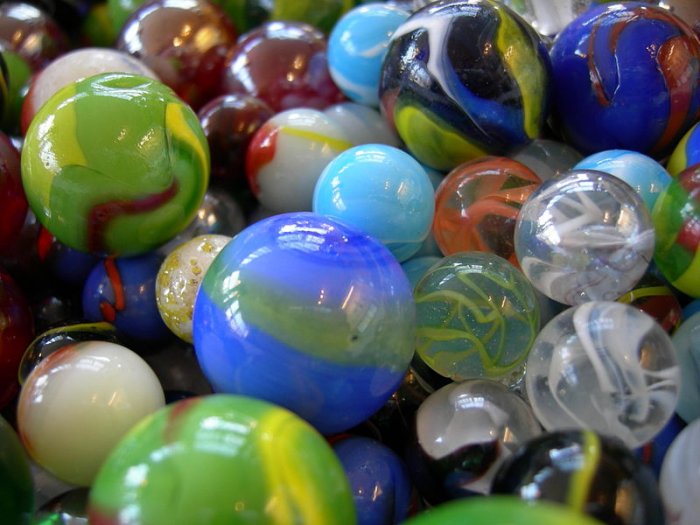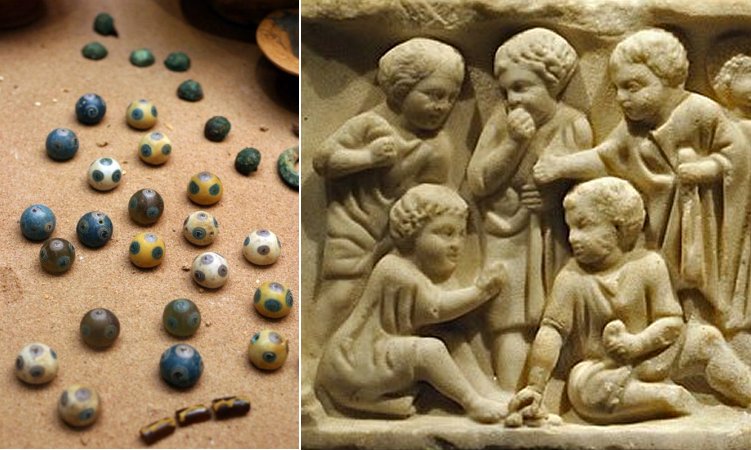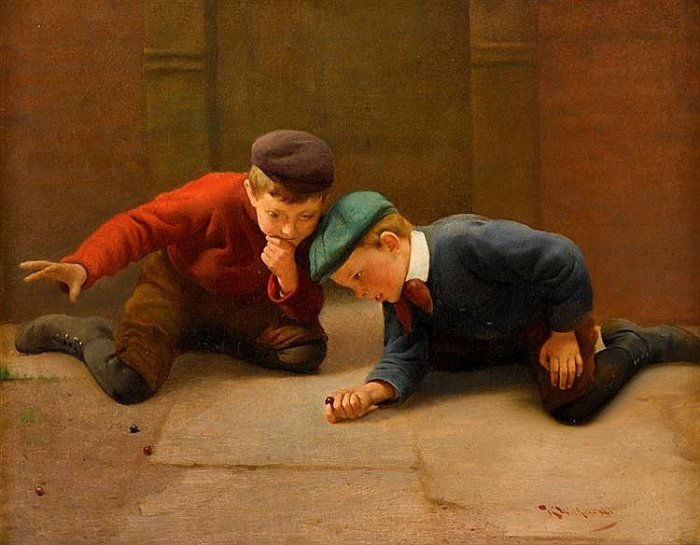Ancient Children Played Marbles Thousands Of Years Ago
Conny Waters - AncientPages.com - Kids will be kids, no matter what country, place or time. Some things are ageless and never go out of fashion.
Many modern children play with computer games, but some of the simplest toys are still as popular as they were thousands of years ago. It seems today’s children enjoy the same things as ancient kids did.
Marbles. Credit: Joe Mabel. CC BY-SA 3.0
Marble is a small spherical toy often made from glass, clay, steel, plastic. These balls are of different size and type. It’s fair to say it’s one of the simplest toys ever produced, but historical records show playing marbles can be fun.
It is unknown where marbles were first manufactured, but there is archaeological evidence that many games played today were enjoyed by children thousands of years ago. The first original marbles, the ones we are today familiar with were produced by a German glassblower in 1846.
Scientists have discovered small, colorful balls in pyramid tombs, and it seems marbles were part of the daily play of Egyptian children a long time ago. The oldest marble set was unearthed buried with an Egyptian child around 3,000 B.C. in a gravesite at Nagada.
Marbles made of clay have been discovered in prehistoric pueblo ruins in the southwestern United States, and in ancient Mexican ruins. Historians think the Aztecs enjoyed playing with marbles.
See also:
Ancient Egyptian Toys And Games In Focus
World’s Oldest Toy Car – Could This 7500-Year-Old Discovery Be The Earliest Evidence Of The Wheel?
What Was Life Like For Children In Ancient Athens?
It is thought that the Aztecs played a form of marbles. Clay marbles have been found in prehistoric pueblo ruins in the southwestern United States, in the classic periods Valley of Mexico ruins, and in the northern plains.
Small, ancient stone balls, identified by archaeologists as marbles have been unearthed near Mohenjo Daro, India and similar artifact have been discovered at prehistoric sites associated with Chaldeans of Mesopotamia.
In ancient Greece and Rome, children loved to play marbles. “On the Greek island of Crete, Minoan youths played with highly polished marbles of jasper and agate as early as 1435 B.C. And it is the Greeks, from their term for a polished white agate, marmaros, who gave us the word “marble.”
Left: Roman marbles. Credit: grandvoyageitaly.com - Right: Ancient Roman children. Credit: Public Domain
Marbles was a popular game among Roman children. The first Roman emperor, Caesar Augustus, would descend from his litter in order to join street children shooting marble pebbles and galls. Even clear glass marbles, fused from silica and ash, were manufactured in ancient Rome.
Despite the numerous marble artifacts obtained from ruins and the many references to the sport in extant texts, rules on how the game was played do not exist.” (Panati, Charles. Extraordinary Origins of Everyday Things)
Game of Marbles, Karol D. Witkowski. Credit: Public Domain
Celtic, Saxon and African children did not have such beautiful glass balls, but they used nuts and olives to play marbles.
We can add that marbles are mentioned in ancient literature and depicted on historical paintings.
It’s fascinating to see how this game developed independently in virtually every ancient culture, and it’s still popular in modern times.
Written by Conny Waters – AncientPages.com Staff Writer
Copyright © AncientPages.com All rights reserved. This material may not be published, broadcast, rewritten or redistributed in whole or part without the express written permission of AncientPages.com
More From Ancient Pages
-
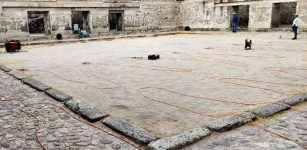 Has The Mysterious Ancient Underground Labyrinth Of Mitla Finally Been Found?
Archaeology | Aug 14, 2023
Has The Mysterious Ancient Underground Labyrinth Of Mitla Finally Been Found?
Archaeology | Aug 14, 2023 -
 Mystery Of An ‘Impossible’ Event In Georgia Linked To An Unusual Woman
Featured Stories | May 15, 2024
Mystery Of An ‘Impossible’ Event In Georgia Linked To An Unusual Woman
Featured Stories | May 15, 2024 -
 Oldest Canoe Ever Discovered In Maine – It Dates To 1280-1380 A.D
Archaeology | Jun 13, 2019
Oldest Canoe Ever Discovered In Maine – It Dates To 1280-1380 A.D
Archaeology | Jun 13, 2019 -
 Wooden Pre-Columbian Human-Like Statues Discovered At Chan Chan Complex In Peru
Archaeology | Oct 25, 2018
Wooden Pre-Columbian Human-Like Statues Discovered At Chan Chan Complex In Peru
Archaeology | Oct 25, 2018 -
 3,500 Underground Man-Made Maresha/Beit Guvrin Caves And Tunnels In The Holy Land
Featured Stories | Jun 1, 2014
3,500 Underground Man-Made Maresha/Beit Guvrin Caves And Tunnels In The Holy Land
Featured Stories | Jun 1, 2014 -
 Jiangshi – Terrifying Vicious Ancient Chinese Vampire In Disguise
Chinese Mythology | Jun 11, 2020
Jiangshi – Terrifying Vicious Ancient Chinese Vampire In Disguise
Chinese Mythology | Jun 11, 2020 -
 Strange Story Of The Viking Who Mysteriously Vanished And Ended Up In America By Mistake – He Was Not Happy About It!
Vikings | Jan 7, 2025
Strange Story Of The Viking Who Mysteriously Vanished And Ended Up In America By Mistake – He Was Not Happy About It!
Vikings | Jan 7, 2025 -
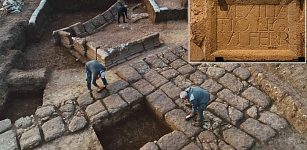 1,800-Year-Old Legio VI Ferrata Military Camp Uncovered In Israel
Archaeology | Feb 21, 2024
1,800-Year-Old Legio VI Ferrata Military Camp Uncovered In Israel
Archaeology | Feb 21, 2024 -
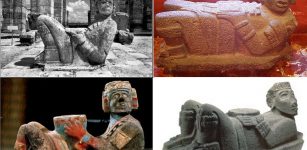 Image Of The Day: Chacmool – Famous Ancient Statue Of Pre-Columbian Mesoamerica
Image Of The Day | Sep 10, 2015
Image Of The Day: Chacmool – Famous Ancient Statue Of Pre-Columbian Mesoamerica
Image Of The Day | Sep 10, 2015 -
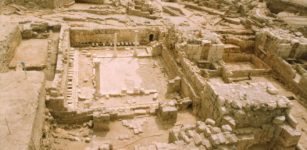 Large Roman Public Latrine With 60 Wooden Seats Discovered In Bet Shean, Israel
Archaeology | Sep 25, 2023
Large Roman Public Latrine With 60 Wooden Seats Discovered In Bet Shean, Israel
Archaeology | Sep 25, 2023 -
 World’s Oldest Wooden Structure Discovered And It Predates Homo Sapiens – Archaeologists Say
Archaeology | Sep 20, 2023
World’s Oldest Wooden Structure Discovered And It Predates Homo Sapiens – Archaeologists Say
Archaeology | Sep 20, 2023 -
 Drought Was Not The Reason Cahokia, North America’s First City Was Suddenly Abandoned – New Study
Archaeology | Jul 4, 2024
Drought Was Not The Reason Cahokia, North America’s First City Was Suddenly Abandoned – New Study
Archaeology | Jul 4, 2024 -
 Mythical Shield-Maidens Did Exist – Evidence Of Female Viking Warriors Discovered
Archaeology | Sep 9, 2017
Mythical Shield-Maidens Did Exist – Evidence Of Female Viking Warriors Discovered
Archaeology | Sep 9, 2017 -
 Remains Of A 2,300-Year-Old Sunken Ship Discovered At Alamein Shore
Archaeology | Aug 12, 2023
Remains Of A 2,300-Year-Old Sunken Ship Discovered At Alamein Shore
Archaeology | Aug 12, 2023 -
 Biblical Events Confirmed: The Jerusalem’s Wall That Nehemiah Built
Biblical Mysteries | Mar 19, 2014
Biblical Events Confirmed: The Jerusalem’s Wall That Nehemiah Built
Biblical Mysteries | Mar 19, 2014 -
 Unique 17th Century Silk Dress Found At Bottom Of The Wadden Sea Goes On Display
Artifacts | Jul 29, 2023
Unique 17th Century Silk Dress Found At Bottom Of The Wadden Sea Goes On Display
Artifacts | Jul 29, 2023 -
 A Magical Handbook For The Afterlife – Insights To Ancient Egyptian Religion, Magic And Secret Knowledge
News | Jul 11, 2023
A Magical Handbook For The Afterlife – Insights To Ancient Egyptian Religion, Magic And Secret Knowledge
News | Jul 11, 2023 -
 Sole Survivor Recalls An Incredible Unexplained Mountain Mystery
Featured Stories | Aug 7, 2023
Sole Survivor Recalls An Incredible Unexplained Mountain Mystery
Featured Stories | Aug 7, 2023 -
 Mythical Place Where Gorgon Medusa Dwelled And Was Killed May Have Been Found By Archaeologists
Featured Stories | Sep 15, 2024
Mythical Place Where Gorgon Medusa Dwelled And Was Killed May Have Been Found By Archaeologists
Featured Stories | Sep 15, 2024 -
 Mysterious Viking Gerdrup Grave – Burial Place Of Sorceress Katla And Her Son Odd Mentioned In The Eyrbyggja Saga?
Featured Stories | Mar 22, 2023
Mysterious Viking Gerdrup Grave – Burial Place Of Sorceress Katla And Her Son Odd Mentioned In The Eyrbyggja Saga?
Featured Stories | Mar 22, 2023

